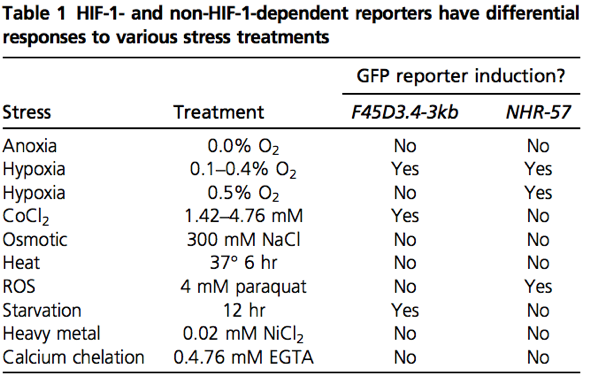Through testing to see if the F45D3.4 gene and the NHR-57 gene (an HIF-dependent reporter, and a positive control in this experiment) it was found that none of the stress treatments were able to induce the F45D3.4 gene, except for the 12-hour starvation. The NHR-57 gene was shown to also be unresponsive to the treatments, except when it was treated with ROS. Cobalt chloride, anoxia, and hypoxia were also treatments that were tested. It was found that NHR-57 is not triggered by cobalt chloride. It simply showing that the mimetic does not have 100% coverage (this is why it is only a primary screening method).
The oter stress factors, as listed above, did not activate F45D3.4 (and NHR-57). As a result, the conclusion of this experiment is that the expression of F45D3.4 (and NHR-57) is not simply a generalized response to stress. The activation of this pathway is a very specific response. Actuvatuib if the genes through GFP was viewed under the microscope (methods for this can be seen in the support pages).
